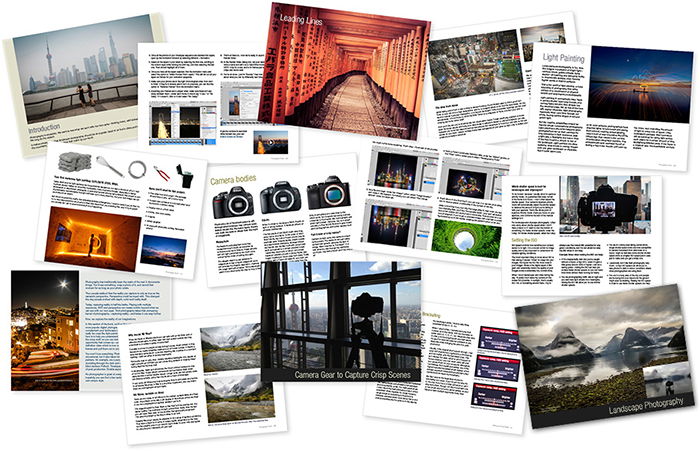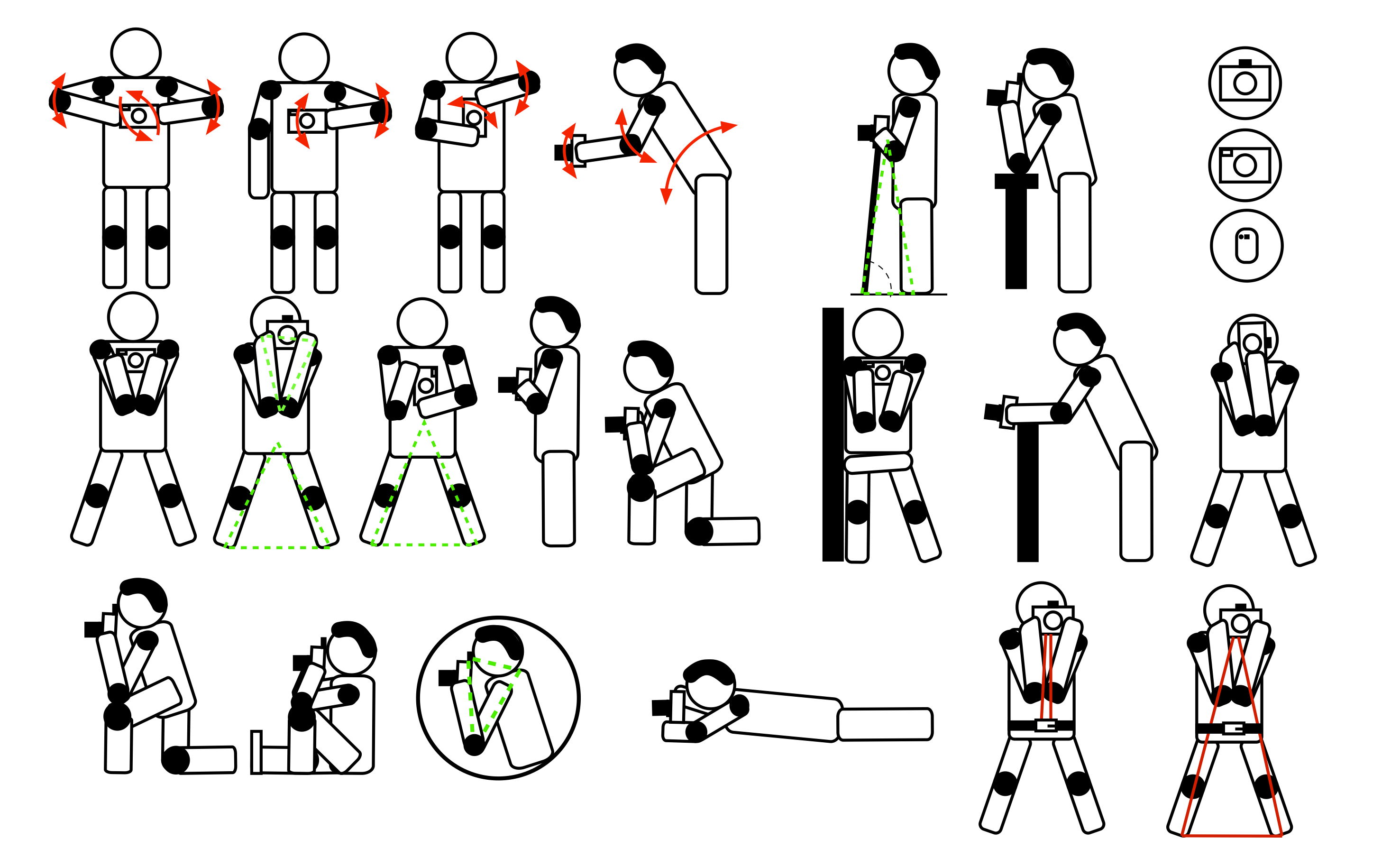The Photography Tutorial eBook is the best guide to learning photography that you will find. It covers all the basics, from understanding camera settings to taking great photos in any situation.
The photo ebook is easy to read and filled with helpful tips and tricks, as well as beautiful full-color photos. Whether you are a beginner or an experienced photographer, this ebook will teach you something new and help you improve your skills.

Are you someone who likes reading and learning advanced photography techniques? Then it’s probably right for you.
Compared to video courses, it has several advantages. First, it’s compact – it’s a small file that you can read anywhere. I advise a big screen, though, to fully enjoy the beautiful imagery.
Second, you can easily search through the content – that’s much harder to do in video format.
And, although it holds great value, its production costs are lower than of video courses. This results in a low consumer price.
The book is far from expensive. I would still say that it’s a long term investment. You can’t learn everything from it overnight – that will be a long journey.

‘The Photo eBook’ concentrates on landscape, cityscape and trick photography, and relevant post-production. You can apply some parts (like exposure blending) to other fields, too.
Take a glance at its contents:
Its in-depth tutorials cover techniques ranging from spherical panoramas through steel wool light painting to star trail exposures.
There is a photography basics section on the first few pages. It covers all the fundamentals briefly. However, you will much more appreciate the book if you already have a firm basic knowledge of photography.
It’s 274 pages long. If you read quickly, can probably get through it in a day or two. Learning and applying its contents will take at least months if they are new to you.
You can purchase ‘The Photo eBook’ for $39, a permanent discount from $99. If you’re for any reason not satisfied with it, you can ask for a refund within 90 days.
The creator of ‘The Photo eBook’ is Richard Schneider, a Los Angeles based professional photographer. He is the founder of PictureCorrect, a leading photography education website.
Besides being a photo enthusiast, he’s also a wingsuit flyer – two vocations of utmost freedom.
He is a great teacher. His style is entertaining and attentive, although not as straightforward as I’d prefer.
His experience and dedication are clearly visible from the ebook.
I enjoyed ‘The Photo eBook’ very much. Its positives massively outweigh its problems, and it’s reasonably priced.
Let me highlight some of the things that especially loved, though.
Authors of photography tutorials often fall into the trap of overemphasising the importance of gear.
Richard does the opposite. He writes about gear very realistically.
The default perspective is that you don’t need anything fancy to follow along. In cases where expensive equipment is required, he notes it properly.
You’ll find plenty of examples in the book where he shows some of his great successes achieved with cheap gear.
One of these is a story on how one of his photos ended up on a well-selling book’s cover. It was a shot he took with a cheap and small action cam – while flying over Dubai in his wingsuit.

I loved how he shows a handful of different options for high dynamic range (HDR) exposure blending.
HDR is a tool that can make or break photos of dynamic scenes. It’s crucial that you learn to utilise it properly, without going over the top.
You will learn how to do it semi-automatically with several programs (Lightroom, Photoshop, and Photomatix). You’ll also learn how to do it manually in Photoshop, by masking and blending layers one-by-one.

Generally, Richard aims to show you as many alternatives as he can (for most of the techniques, not only HDR).
I’m not an enemy of simplifying things in order to learn faster. But if you’ve read some of my previous reviews, you might know that I hate when instructors oversimplify things. I believe that it takes away value, and here’s why.
When you start learning photography, you inevitably have to believe things. You can’t really view them critically. But it’s not your fault – your knowledge to do so is yet missing.
Thus, misleading simplifications can get ingrained very deep. Dissipating the confusion around them takes more time than it would have to learn them properly.
So, I’m genuinely pleased that this is not the case in ‘The Photo eBook’. Richard provides enough detail so that your knowledge won’t require corrections in the future.
In several products that I’ve seen, one of the key problems was the photos looking amateurish.
Here, they are definitely not. The images look professional and gorgeous.
Richard tends to use his own images where he can. Additionally, the book features shots from photographers around the world. In these cases, they are properly licensed (with Creative Commons). He also added links to the originals on the internet, as well as all relevant information.

I believe that ‘The Photo eBook’ works really well.
To be honest, I didn’t have huge expectations before starting to read. So, it wasn’t a hard job for the book to overperform them. It represents a much higher standard than I anticipated.
It definitely makes you a very conscious photographer. If you have all the options in mind when going out for a shoot or a trip, you can make the right decisions quickly. You’ll arrive home with better thought-out, properly executed images.
I captured this composite image below following the techniques detailed in the book. I am aware that it won’t win awards. It took a total of 15 minutes to shoot and edit, and I only moved to the balcony of our office.
The point is that you will be able to work with these methods too. You can then apply them in much better circumstances than I did here.

‘The Photo eBook’ was released in 2014, and it hasn’t seen (major) updates ever since.
This doesn’t harm the product overall, but some sections are somewhat outdated.
These include mostly the parts about gear and post-production. Equipment and software are constantly renewing things – 6 years of development can’t be ignored.
For example, automatic HDR features have been added to Lightroom since 2014. Photoshop has been updated with tools that make selecting detailed areas much easier.
I’d have also liked to see luminosity masking as an alternative way of processing HDR images.
It would be awesome if Richard could include those in a new edition.
Also, some of the links in the book don’t work anymore for the same reason.
As I mentioned, the book is 274 pages long, and those pages are filled with content densely. It’s roughly 70.000 words.
This wouldn’t qualify as an issue if it was all valuable material. However, the length is in part due to Richard’s style, which is a bit excessive in some places.
It’s certainly a joy to read, but if someone only seeks dry information and not a literature experience, it’s probably too much for them.
<img class=”wp-image-268273 size-full” src=”https://cdn.expertphotography.com/wp-content/uploads/2020/01/the-photo-ebook-page-snippet.jpg” alt=”A screenshot of one of the pages from The Photo eBook ” width=”700″ height=”523″ /> Great style, but it could be just a bit drierOverall, I strongly recommend ‘The Photo eBook’.
It’s hard to come by such a well-produced and comprehensive guide in this field, especially in the form of an ebook.
For $39, it’s a no-brainer. You can check it out here.
To standardise and compare our product reviews, we’ve decided to use a scored-based ranking system. To learn more about interpreting these numbers and how other courses measure, please visit our review roundup page here.
| Measurement |
Measurement
Score
|
| Coverage |
Coverage
|
| Accuracy |
Accuracy
|
| Ease of Learning |
Ease of Learning
|
| Production Value |
Production Value
|
| Uniqueness |
Uniqueness
|
| Value for Money |
Value for Money
|
| Total Score |
Total Score
|


